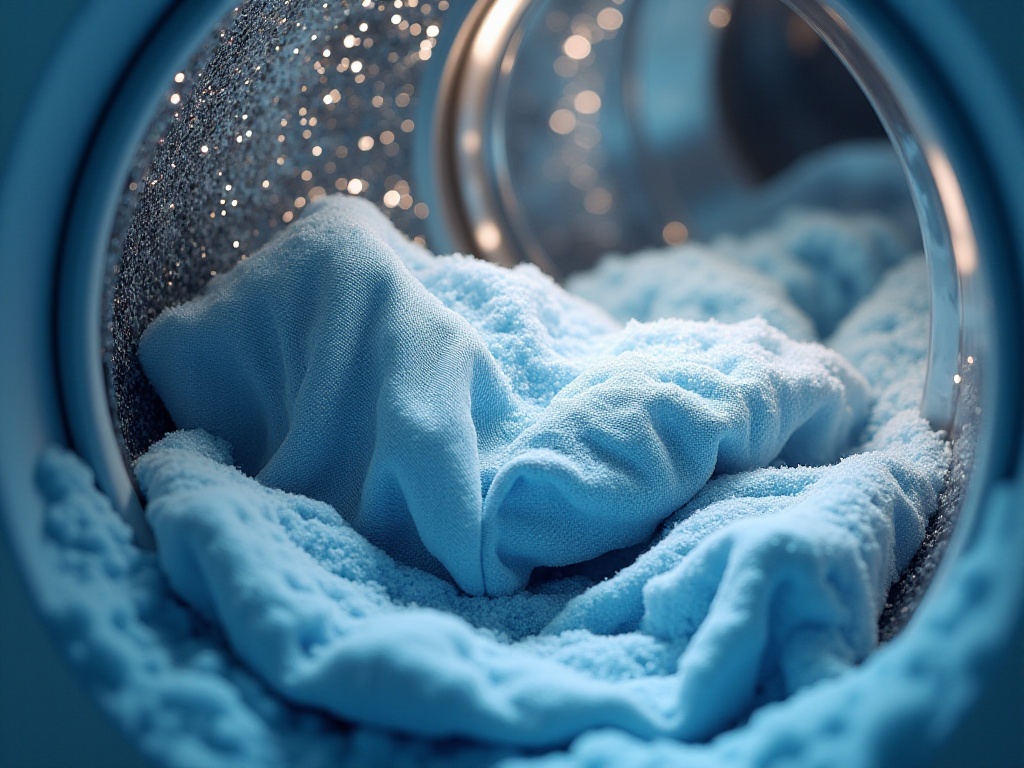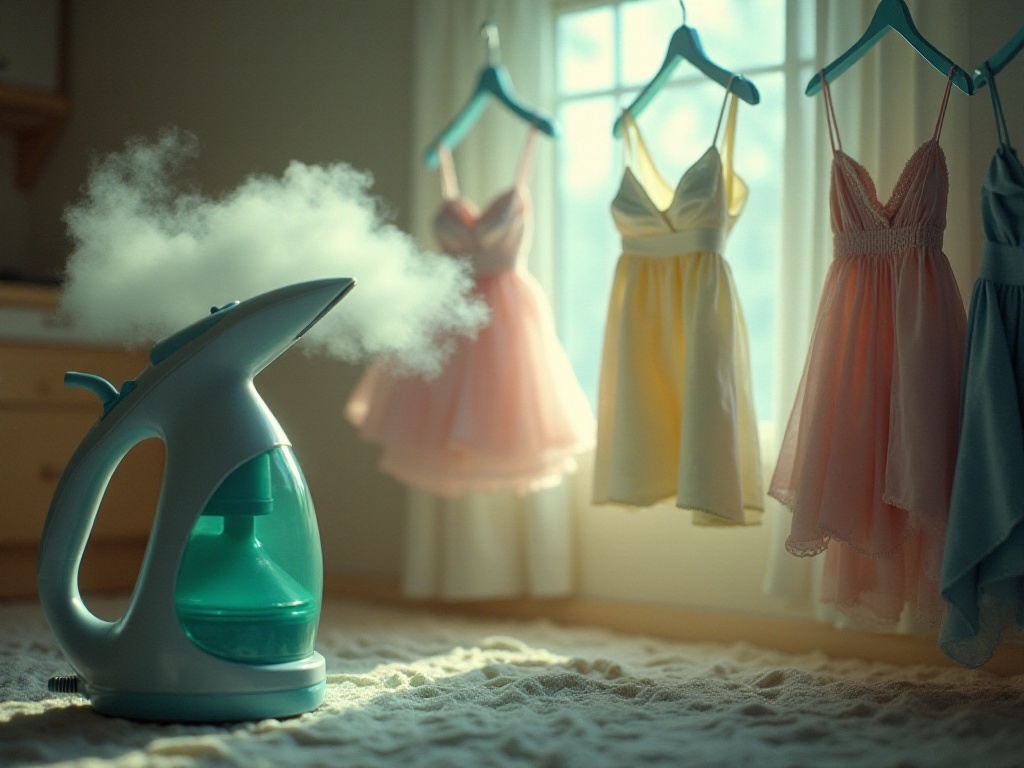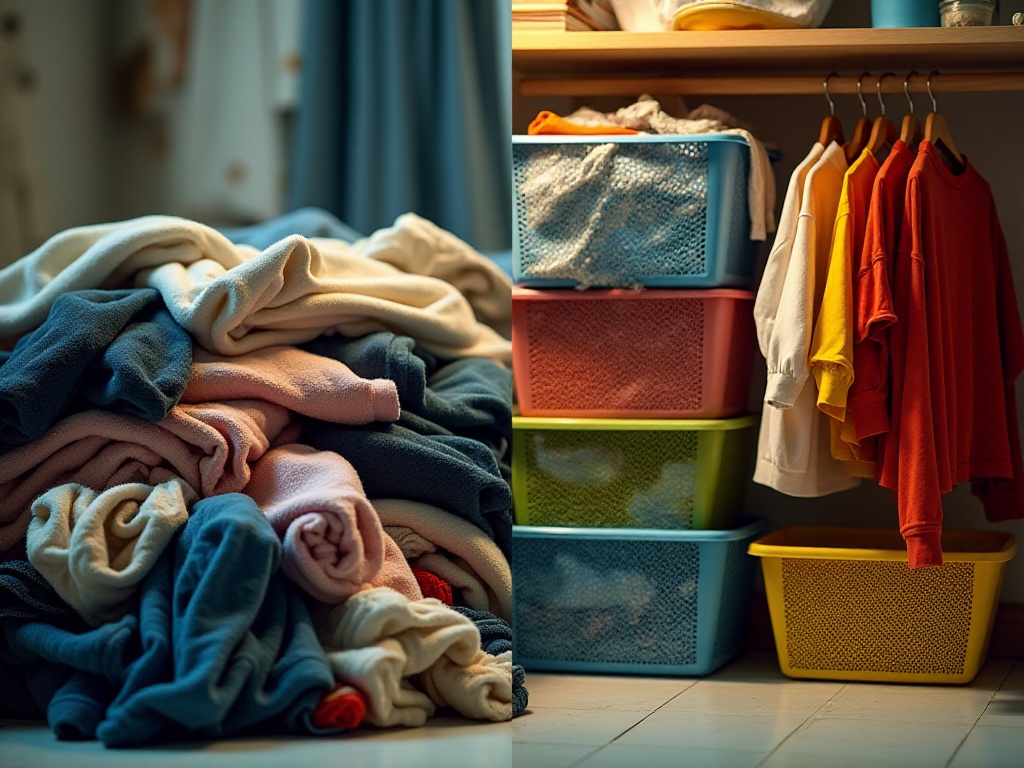Introduction
As a newly employed professional who needs to dress well daily, I often faced issues with new clothes: severe pilling on new sweaters, yellowing white shirts after washing, and wool sweaters shrinking to children's sizes. Most frustratingly, sorting laundry took forever but still didn't yield ideal results. After two years of exploration and learning, I've finally mastered some practical clothing care techniques that keep my wardrobe well-maintained and long-lasting.
Basic Preparation
Before starting laundry care, we need thorough preparation. Just like preparing ingredients before cooking, laundry requires advance planning. I used to carelessly toss clothes into the washing machine - looking back, that was quite reckless.
Let's start with airing and spot cleaning. When I first started working, I'd throw clothes directly into the laundry basket after work and deal with everything on weekends. Now I hang worn clothes in a well-ventilated area on the balcony unless they have visible stains or post-perspiration odors. This maintains their shape and reduces wrinkles. It's especially important for hard-to-wash items like suit jackets and wool sweaters, as excessive washing accelerates their wear.
Spot cleaning is truly essential. Last week, I accidentally splashed tomato sauce on my white shirt while dining with clients. I immediately blotted the sauce with napkins and treated it with a professional stain remover when I got home. Now you can't tell the shirt ever had tomato sauce on it. If I had ignored it until the weekend wash, that stain might have become permanent.
Additionally, always check pockets before washing. I've found various surprise "gifts" in the washing machine: coins, tissues, receipts, and once almost washed my new wireless earbuds. Now I habitually check all pockets thoroughly and remove everything before washing.
Detergent selection is also crucial. There are many types available, but not all suit every fabric. I recommend having at least three different detergents: one for regular clothes, one gentle detergent for delicate fabrics, and one specifically for athletic wear.
Sorting Guidelines
Proper sorting is the first step in good clothing care. I sort my laundry considering several factors:
First is color sorting. Dark and light clothes must be washed separately - this is extremely important. Last year, I bought dark blue jeans online and didn't think about it during the first wash, resulting in a beige sweater turning light blue. Since then, I've made it a rule: new dark clothes must be washed separately at least three times before joining other laundry. For white items, I collect them and wash them together when there's enough.
Fabric sorting is also crucial. Different fabrics need different washing methods. Delicate fabrics like silk and wool can be damaged or snagged if washed with rough items like jeans and towels. I now sort clothes into major categories: cotton, synthetic fabrics, wool items, silk items, etc., each with its own washing method.
Sorting by soil level is also necessary. Clothes from workouts or with oil stains need more intensive cleaning, while normally worn clothes can be washed gently. I have a special laundry basket for heavily soiled items, which get their own wash cycle.

Washing Techniques
Regarding specific washing techniques, water temperature control is fundamental. Many think hotter water cleans better, but this is incorrect. Unless clothes are extremely dirty or need disinfecting, room temperature water is sufficient. I mostly use cold water now, as it protects fibers and reduces color fading.
I use different washing methods for different types of clothing. Sturdy items like cotton T-shirts and jeans can go directly in the machine; delicate items like wool sweaters and silk shirts get hand washing or the wool cycle. When hand washing, be careful not to scrub too hard to avoid damaging fibers.
Mesh laundry bags are essential tools. I have different sized bags for different items: small ones for underwear, large ones for sweaters, and fine-mesh special bags for silk items. This protects clothes from pulling and prevents small items from getting lost or stuck in the drain.
Regarding detergent amount, many people tend to use too much, thinking it cleans better. This is actually counterproductive. Excess detergent doesn't clean better and can leave residue that makes clothes stiff and yellow. I now strictly follow package instructions, often using slightly less.

Natural Care
Besides regular detergents, some natural cleaning products work great. White vinegar is one of my favorite "secret weapons." I add half a cup during the final rinse cycle. It softens clothes and removes odors and detergent residue. It's especially effective for athletic wear - post-workout sweat smell completely disappears.
Baking soda is another great option. For oil stains, I sprinkle baking soda powder on the spot, wait 15 minutes, then wash normally. Baking soda's gentle cleaning power is amazing and completely safe for fabrics. Recently, I bought a vintage coat from a secondhand market. After treating it with a baking soda and vinegar solution, it not only lost its old smell but became softer.
Lemons are also excellent natural cleaners. I often use a mixture of lemon slices and salt to remove yellow stains. This works especially well on white clothing collars and cuffs that yellow from sweat. Plus, lemons leave a natural fresh scent that's better than chemical fragrances.

Special Care
Some special fabrics need specific care methods. Sweater pilling is a common problem. I bought a professional fabric shaver and address pills as soon as they appear. The first time I used it, I tried it on an old sweater I was planning to throw away. Surprisingly, it looked like new afterward, with the fuzzy surface becoming smooth and neat.
Steam care is another very useful technique. I invested in a handheld steamer - possibly my most worthwhile appliance purchase. After business trips, packed clothes get wrinkled, and I used to iron each piece. Now I just quickly steam them. Steam care not only removes wrinkles but also sanitizes and deodorizes, perfect for suits and coats that can't be frequently washed.
Moth and mold prevention is also crucial. I place natural herb sachets in my closet for fragrance and pest control. For seasonal storage, I use vacuum storage bags to save space and prevent moisture damage.

Daily Maintenance
Beyond cleaning, daily maintenance is important. I shape clothes before hanging them after wear. Suits and coats need proper hangers - regular wire hangers can leave shoulder marks. I regularly check clothing condition and immediately repair loose buttons or small holes before they worsen.
Shoe care can't be neglected. I use shoe trees after wearing to maintain shape. Leather shoes get regular conditioning, and athletic shoes get cleaned with special cleaners. Well-maintained shoes are more comfortable and last much longer.

Storage Tips
Good storage extends clothing life. I use the vertical folding method, making all clothes visible and accessible. Different items get different storage: T-shirts and sweaters are stored vertically, suits and coats must be hung, and expensive bags need dust covers and proper stuffing to maintain shape.

Conclusion
Through these tips, you should now have a deeper understanding of clothing care. It's not difficult - the key is patience and attention to detail. Master these basic principles and develop your own methods to keep clothes in good condition and maintain an elegant lifestyle.
These are experiences I've gathered over two years, and there's likely room for improvement. Different people may have different care insights - please share your unique perspectives in the comments. Let's improve our clothing care together and help our favorite pieces last longer.
Related articles




